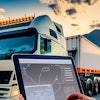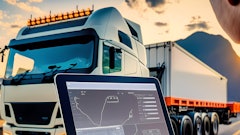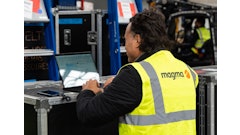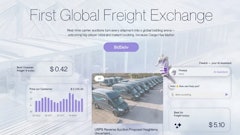
From curbside chaos in New York to congestion charge confusion in London, urban logistics has so much to navigate, and transportation data is supposed to be the fix. The irony, however, is that managing the vast volumes of available data has become a challenge in itself.
Local carriers are caught off guard by surprise construction. Small logistics firms are unable to access the same high-quality live data as the big players. Moreover, 90% of registered passenger and freight carriers operate in fleets of 10 vehicles or fewer. The problem isn’t a lack of data; it’s that the data is fragmented, outdated, or locked behind paywalls and PDF portals.
As cities scramble to implement low-emission zones, real-time curb regulations, and AI traffic control (like Pittsburgh’s smart loading zones pilot and California’s smarter streets push), the logistics sector is left trying to piece together a jigsaw puzzle with missing pieces.
Here’s how the bureaucratic bottlenecks and legacy technology prevent transportation data from living up to its promise.
The data exists, but not where it’s needed
Cities are collecting all kinds of data, including traffic patterns, curb access rules, lane closures, emissions zones, and live camera feeds. But for small carriers navigating dense urban centers, access remains the biggest roadblock.
Shipping avocados to Walmart can involve as many as 30 businesses and up to 200 unique interactions across a network of cargo ships, ports, airlines, rail lines, and trucking companies. Stakeholders looking to gain access to this information must navigate data sharing regulations between third parties across multiple countries and states. Even when data is available, it rarely speaks the same language.
Transportation companies often organize information to meet the needs of their functions. That means the insights shippers seek often require another layer of specialized analysis.
Large fleet operators may have the integrations and technical teams to turn this into usable intelligence. But the average small fleet doesn’t have the budget or in-house expertise to plug into every city’s bespoke platform. Moreover, premium TMS or freight-exchange solutions often restrict real-time data behind paid access or PDF portals that require manual extraction. Without access, drivers can find themselves arriving at fully occupied loading zones or getting fined for idling in the wrong spot.
So the question isn’t how to produce more transportation data — it’s how to democratize it.
Cities want to help, but bureaucracy slows them down
Urban planners and transportation departments are, in theory, on board with smarter, more open mobility data. Cities like Barcelona, Chicago, and Los Angeles are running pilots for AI-powered traffic management, digital curb systems, and sensor-based loading zones. But turning these experiments into reliable infrastructure comes with its own complications.
For example, in 2021, Pittsburgh received a $100,000 grant from the Department of Energy to establish 20 smart loading zones. When the SLZs went into effect, program leaders had to balance pushback from local businesses, with restaurants worried their customers would have to pay just to pick up to-go orders. Since modern sustainable streetlights do not have power during daylight hours, leaders also had to consider alternative power sources for the cameras monitoring the SLZs.
These programs make a huge difference. This one, in particular, demonstrated a 95% reduction in double parking. However, they take time. The pilot program became permanent four years later, in December 2024. To iron out details like appropriate time limits and pricing, stakeholders must establish performance metrics, track progress against them, and openly communicate outcomes with stakeholders.
Part of the challenge is that city systems weren’t originally built for real-time logistics. Most traffic and curb rules still live inside layers of municipal code that are infrequently updated, enforced inconsistently between states or pan-European locations, and shared through opaque channels. Even when modern platforms exist, legal and procurement barriers hold cities back from scaling them beyond small zones or pilot blocks until proven metrics are available.
Startups are hacking the gridlock from the outside in
While cities wrestle with proving pilot schemes feasible and the friction of overlapping jurisdictions between transit authorities, environmental regulators, and city councils, startups work around the bureaucracy to bridge the data gap directly.
Third-party data hubs can fill in for under-resourced city IT departments. They can help small and mid-sized cities analyze traffic, curb use, and enforcement data with plug-and-play dashboards. By using existing camera feeds and open data streams, they empower local governments to visualize collision risk areas, isolate routes to monitor congestion, and target speeding for proactive traffic enforcement. These dashboards and insights are often shared with delivery partners or contractors, improving how fleets plan routes and avoid traffic pinch points.
Similarly, startups are beginning to partner with cities to aggregate mobility data from scooters, delivery vans, and ride-hail fleets. Their platforms standardize and anonymize mobility information alongside parking data integrated from a city's existing systems and informs users on new policy and pricing decisions. This helps create predictable, open curb systems that fleets can tap into, often via integrations.
What’s promising here is the strategy: these startups are building tools that work within today’s chaos, scraping PDFs, digitizing live curb maps, and using computer vision to extract usable data from analog streets. They’re proving that better logistics visibility doesn’t have to mean bigger infrastructure. Sometimes, it just means smarter stitching of the existing data.
Transportation data won’t fix urban logistics until it becomes a utility, not a luxury. In other words, embedded in the everyday tools that carriers, drivers, and dispatchers already use. That means building systems that are not just open, but interoperable. In the ideal world, cities treat mobility data the way they treat power or water: not as a service they “offer,” but as infrastructure they maintain and share. Until then, startups that integrate this data for small logistics firms to access create a bridge. You just have to know where — and how — to tune in.




















